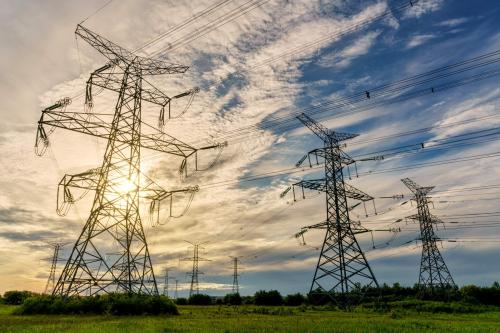Recognition of the power sector’s central role in hindering India’s competitive cost advantage hardly needs elaboration; industrial power tariffs in India are probably the highest amongst its major emerging market peers. In an increasingly globalised and open trade environment, this is a significant disadvantage in sectors with a major power cost component. A faltering in India’s industrial growth momentum has implications for debt servicing capacities of large, bulk consumers, further aggravating sector financials.
There is an emerging dichotomy regarding prospects of the sector. There seems to be an assessment by important and diverse stakeholders that there is a revival underway in India’s power sector. Actual and planned investment and financing decisions based on hard data and anecdotal evidence seems to corroborate this. The fiscal year 2009/10 witnessed capacity addition, much of it thermal, of 9.6 GW, the highest ever in a single year. In contrast, the “exuberance” of investment is somewhat confounding when we examine recent official “macro” commentary on the Indian power sector.
Against the backdrop of a revival in investment in the sector and the concomitant larger context of concerns about the possibility of credit stress, the development of power markets, and open access and third party sales are assuming increased importance.
The recent paper by Saugata Bhattacharya and Urjit R. Patel, “Does the Exuberance in the Indian Power Sector Have Legs?”, presented at the Federalism and Reform in Asia Conference in New Delhi, focuses on two issues which are likely to have a profound impact on the nature and speed of development of the power sector. The first issue is the fiscal implications of the changing financials of the distribution segment of the electricity sector. The second issue is the evolving conditions of commercial orientation of the sector. The first concern is self evident. The second follows from the increasing participation of private developers of generation plants, the rapidly growing exposure of domestic and foreign debt financiers in the projects and the critical role of distribution utilities in generating cash flows for successful enabling of power purchase agreement (PPA)-tied debt servicing for borrowers. To aid this exercise, a summary measure – Index of Revenue Orientation (IRO) – which had earlier been conceptualised and constructed by the authors to capture critical (commercial) aspects of the sector is updated.
The mid-decade improvement in the performance of the power sector has not been transformative. While there is widespread differences between states (and, indeed, between utilities), the unsettling aspect of recent performance of state-level power utilities is the speed of deterioration in the sector’s overall financials, with losses in 2008/09 exceeding Rs. 526 billion, that is doubling over the course of just a couple of years. After a period of relative tranquillity, as a percent of GDP, financial losses are back to 2002/03 levels.
Although the recent increase in the losses of state utilities have not yet overrun GDP growth to the extent of the situation in the late 1990s and early 2000s, and hence might be containable from a fiscal perspective at least in the short term (which is still a matter of disquiet given the desirability of fiscal consolidation), the implications for servicing the debt required for funding additional capacity is potentially of considerable concern if the recent trajectory of sector performance continues.
The increasing gap between the Average Cost of Supply and Average Revenue Realisation of electricity, specifically pertaining to the industrial segment, is probably the most important driver of the deteriorating losses. This gap is mainly due to the sharply increased cost of procured power outpacing the (relatively modest) increase in revenues as reduction in Aggregate Technical and Commercial losses has lost traction in recent years. It is becoming increasingly evident that not only is the power sector less homogenous than it used to be less than a decade ago, it has become more heterogeneous in 2008/09. What had initially begun to appear as a “separating” equilibrium in 2005/06, with some state governments (as owners) managing a financial turnaround and sustaining (cash) profits for several years has unfortunately not sustained for many states.
Is there any indication that the course of increasing losses can be reversed quickly? Not that we can see. What is worrying about the deterioration and its concentrated origins is that the utilities of the relevant states were considered, even until very recently, to be some of the better ones in operational terms. The continuing losses reported in 2009/10 and projected for 2010/11 can only suggest that the deterioration has spread to other states as well.
Since financial sector exposure to the sector has grown robustly in recent years, there is the possibility of a wider challenge if the health of the cash-generating segment has been misread by private investors and lenders. Given recent global experience of coping with the aftermath of miscalculated risk and leverage it may not be as unlikely as one would prima facie think. When private entities, including financial backers/banks, involved in a sector are deemed too systemically significant (too big, too complex, too interconnected) or too politically connected to fail, bailouts (even of irrationally exuberant sectors) take place. Are we at yet another threshold of private gains but losses socialised? Time will tell!



Commentary
Op-edAssessing the Investment Exuberance in India’s Power Sector
February 3, 2011